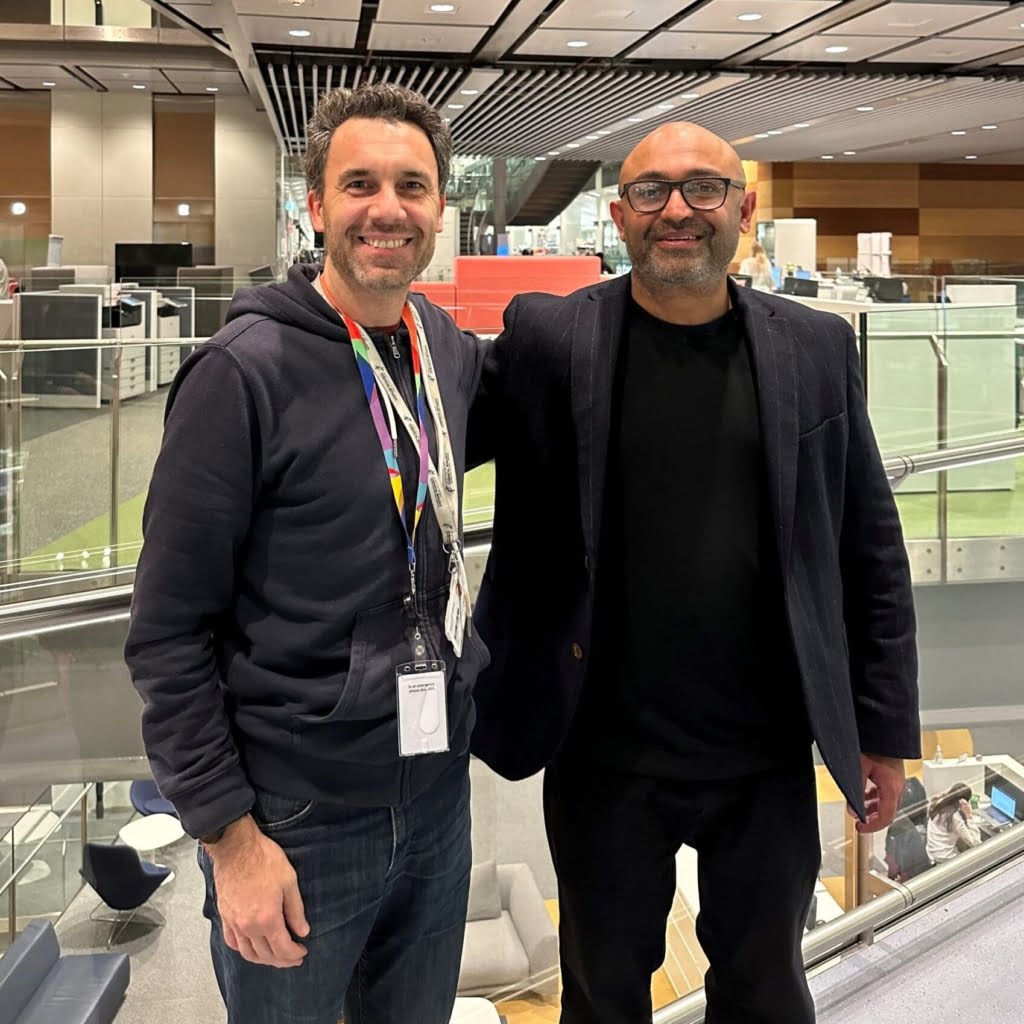
Current Lister Fellows Marco Di Antonio and Rickie Patani have united to carry out ground-breaking research on amyotrophic lateral sclerosis and its associated molecular phenomena. Could it be that strange forms of RNA are responsible for some of the condition’s devastating symptoms?
In a paper published in Nature Communications, the two Fellows and their co-authors explain their discovery that genetic material, rather than just proteins, could play a causal role in ALS (also known as motor neurone disease). We caught up with them to talk about their remarkable findings and the Lister connection that helped bring them together.
Genes on repeat
ALS research often focuses on proteins. But Rickie and Marco’s team have discovered a new pathway between ALS and a phenomenon called gene expansion, which happens in our DNA. In gene expansion, a short string of nucleotides, our genetic building blocks, seem to get stuck on repeat like a stutter in speech or a scratched record.
At the start of their work, the team believed – but had not yet proved – that RNA translated from expanded genes was laying the foundation for aggregations, solid masses of protein that collect around the neurons in ALS.
“We didn’t know what to expect, but we knew there was a strong correlation – somehow, this nucleic acid is doing something that can trigger the disease,” says Marco.
“This research tells us that RNA itself, even in the absence of protein, can start an aggregation. That’s incredibly exciting because the RNA might be targetable through existing modalities like antisense oligonucleotides. It’s a huge prospect.”
Serendipitous collaboration
As Lister Fellows, Rickie and Marco became aware of each other as part of the close-knit Lister community.
“I contacted Rickie ahead of the Lister Annual Meeting after going through the list of Fellows,” recalls Marco. “I dropped him an email because I needed someone with expertise in ALS, ideally in London, who could validate our more in vitro findings in a therapeutically relevant model.
“And then he said, ‘Actually, this is exactly what we wanted as well, to validate some of our stuff,’ and so we met exactly midway.”
The two scientists’ specialities seemed to click together like pieces in a jigsaw puzzle – Marco’s in vitro research with genes, which gave the project a tremendous theoretical foundation, and Rickie’s clinical work with ALS patients, which helped not only to validate the science in vivo but to hammer home the value of the work to clinical and therapeutic stakeholders.
“We designed the experiments collaboratively,” says Rickie. “We took samples from patients who carry this repeat expansion and samples from a control group. Then we looked at them using a tool, again, from Marco’s lab, that allowed us to visualise the RNAs. From this, we could infer that they were these RNA-based aggregates.”
Being able to examine real people’s cellular material, which expresses disease in their motor neurons, was much more valuable than only using knock-down or artificially overexpressed genes to test the phenomenon in a lab.
The Lister connection
Being Lister Fellows has catalysed the relationship between the two researchers.
“It’s not something we’ve discussed at any point, but whenever I see that someone is a Lister Fellow, my willingness to respond to them is very high,” says Rickie. “And clearly the project was hugely exciting as well. The combination of these things made us very, very keen.”
“The interdisciplinarity has been key for us,” he continues. “We’re immensely grateful to the Lister Institute because there’s no other connection between us that would have made this happen. It’s fantastic that we’ve come together in this way and we’re planning so much more – it’s been a springboard for even more questions.”



